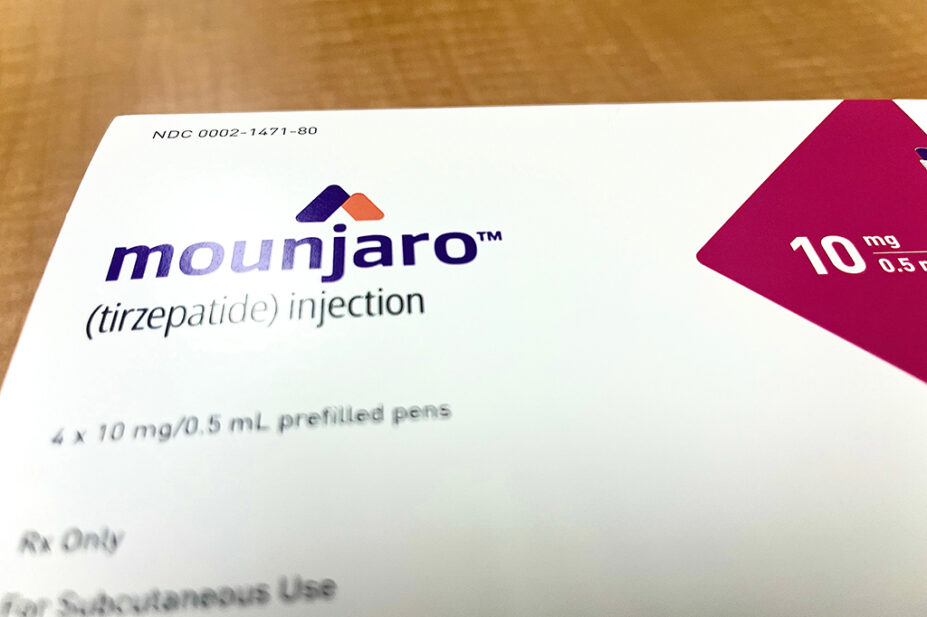
Shutterstock.com
Results from a meta-analysis of 22 randomised controlled trials across Medline and the Cochrane Library have suggested that tirzepatide (Mounjaro; Eli Lilly) is superior to semaglutide for blood sugar control and weight loss.
The early publication of the study abstract on 22 September 2023 was released ahead of its planned publication at the annual meeting of the European Association for the Study of Diabetes (EASD) in Hamburg, Germany, in early October 2023.
The analysis included data from 18,742 patients with type 2 diabetes mellitus (T2DM) receiving 5.0mg, 10.0mg, or 15.0mg once-weekly subcutaneous tirzepatide or 0.5mg, 1.0mg, or 2.0mg once-weekly subcutaneous semaglutide for at least 12 weeks.
Comparisons were measured by calculating any differences in HbA1c, blood glucose control, body weight and risk of adverse events.
Authors found that tirzepatide 15mg was most effective in reducing HbA1c (mean difference, -2.0%), followed by tirzepatide 10mg (-1.9%) and semaglutide 2mg (-1.6%) compared with placebo. They also found that each of the three tirzepatide doses reduced HbA1c more than the respective low, medium and high doses of semaglutide.
The results showed that tirzepatide was more effective in reducing body weight than semaglutide at all respective doses, reporting figures of -6.2kg, -8.8g, and -11.0kg and for tirzepatide 5.0mg, 10.0mg, and 15.0mg, respectively, versus -2.7kg, -4.4kg, and -5.2kg for semaglutide 0.5mg, 1.0mg, and 2.0mg, respectively.
Both tirzepatide and semaglutide were associated with increased risk of gastrointestinal adverse events compared with placebo at all doses, tirzepatide 15mg was associated with the highest risk for nausea (3.6 times), vomiting (4.4 times) and diarrhoea (2.0 times).
Commenting on the meta-analysis, Douglas Twenefour, head of care at Diabetes UK, said: “Tirzepatide will provide another effective treatment option for managing T2DM.
“It is very promising that the trial data showed great improvements in blood glucose management and weight loss,” he said.
Hannah Beba, consultant pharmacist in diabetes at West Yorkshire Health and Care Partnership, raised issues around the practicality of administration following the results.
“Although Ozempic (semaglutide) is licensed to be used up to a dose of 2.0mg once weekly, in the UK we do not use this dose as there is no pen devices available that administers this,” she said.
“You would have to take two 1.0mg injections, which is not cost efficacious.”
In final draft guidance, published on 8 September 2023, the National Institute for Health and Care Excellence (NICE) recommended tirzepatide for the treatment of T2DM, reversing its initial decision against use of the drug in June 2023.
“Once [tirzepatide] is launched we will have discussions within our health systems about cost efficacy at the different doses for different cohorts of people living with T2DM,” said Beba.
“We will also reflect on the NICE criteria for access. If the 5.0mg [tirzepatide] is the same cost as 1.0mg Ozempic, then I would imagine [tirzepatide] 5.0mg would be used in preference to Ozempic.”
Beba highlighted that tirzepatide is still awaiting results from a cardiovascular outcome trial — ‘SURPASS-CVOT’, due late 2024 — which may influence recommendations.
“I certainly expect that tirzepatide will get an obesity licence. The SURMOUNT 1-4 trials have shown incredible results. It’s a new age of incretins,” she added.
1 comment
You must be logged in to post a comment.



This is apparently incredibly!!!